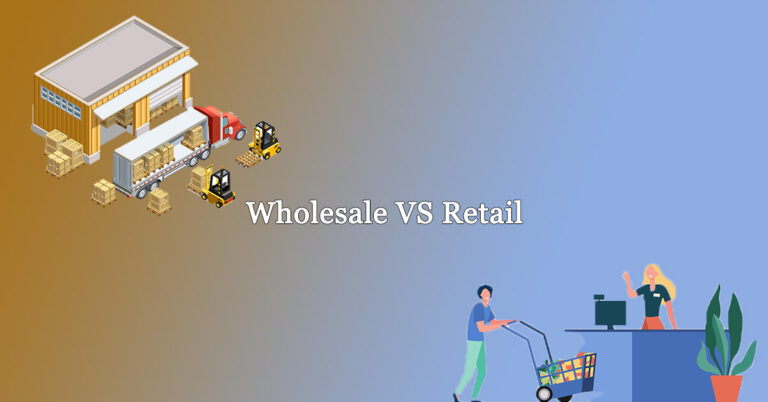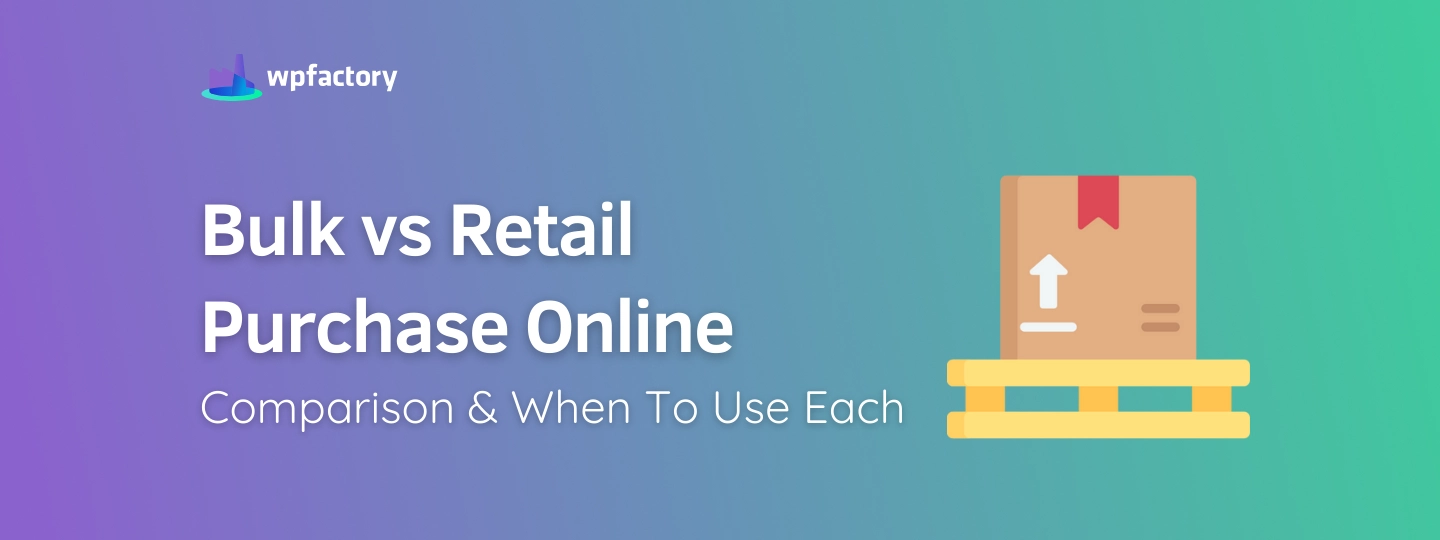Retail vs. Bulk Purchasing: Pros, Cons & Choosing the Best for Your Woo Store
In the dynamic world of business, purchasing strategies play a critical role in determining profitability, efficiency, and overall success. Two common purchasing approaches, retail purchasing, and bulk purchasing, often appear interchangeable, but they differ significantly in their objectives, processes, and outcomes.

Understanding Retail Purchasing
Retail purchasing involves acquiring goods in smaller quantities, primarily for the purpose of reselling them to individual consumers. Retailers typically purchase products from manufacturers, distributors, or wholesalers, and then sell them to end users through their physical stores, online platforms, or a combination of both.
Key Stages of Retail Purchasing
- Analyze Sales Data: Historical sales data tells you what your customers are buying. Use tools like the Products, Order & Customers Export for WooCommerce Plugin to generate reports on product popularity, customer demographics, and purchase behavior. This data can help you identify trends and cater your products to current preferences.
2. Identify Manufacturers, Products, and Brands:
Now it’s time to find the right products to fulfill your customers’ needs. Consider the following:
- Supplier Research: Look for reputable vendors with a strong track record in your industry. Focus on suppliers familiar with your niche, as this can lead to better collaboration and understanding of your needs.
- Reviews and References: Check online reviews and ask for references from other businesses that have worked with the suppliers you’re considering.
- Certifications: Look for relevant certifications (e.g., ISO, quality standards) that demonstrate the supplier’s commitment to quality and compliance.
3. Going to Market:
It’s time to discover potential products. Here are some strategies:
- Trade Shows and Expos: Attend industry trade shows or expos to see new products and network with suppliers directly.
- Catalogs and Online Platforms: Browse through industry catalogs and online platforms to discover a wider selection of products and materials.
- Utilize Your Plugins: Enhance your store’s product discovery with plugins like “Related Categories for WooCommerce Plugin.” This plugin dynamically showcases related product categories on your product pages, boosting customer engagement and potentially leading to higher sales.
Pricing Strategies:
Retail purchasing focuses on selling products in smaller quantities directly to individual customers. The goal is to strike a balance between maximizing profit margins while remaining attractive to price conscious consumers.
Key Pricing Characteristics of Retail Purchasing:
- Higher Unit Prices: Retailers generally pay higher unit prices compared to bulk purchasers due to their smaller order sizes and associated costs. However, WooCommerce plugins like Product Price by Quantity for WooCommerce can help mitigate this by offering tiered pricing structures.
- Cost-Plus Pricing: This straightforward method involves calculating the total cost of producing or acquiring a product and adding a desired profit margin to determine the selling price. Using plugins like Cost of Goods for WooCommerce can simplify cost calculation and profit determination, making the process more efficient and accurate.
- Competitive Pricing: Researching competitor prices for similar products ensures that your prices remain competitive and align with market expectations.
- Value-Based Pricing: This approach focuses on the perceived value your product offers to customers, setting a price that reflects its unique benefits and features.
- Psychological Pricing: Techniques like using odd-numbered pricing (e.g., $19.99) or price anchoring (offering a higher initial price before a discount) can subtly influence customer buying decisions.
Understanding Bulk Purchasing
Bulk purchasing, the acquisition of large quantities of goods, often involves direct transactions with manufacturers or suppliers. This strategy is commonly adopted by businesses, organizations, or institutions that require substantial amounts of products for their operations or distribution.
Key Stages of Bulk Purchasing
In today’s globalized economy, bulk purchasing offers significant advantages for businesses looking to optimize their supply chain, inventory control, and financial planning. Manufacturers and wholesalers often provide substantial discounts for large orders, leading to reduced production and distribution costs per unit. However, to leverage bulk purchasing effectively, strategic planning is crucial. Here are some key strategies to consider:
1. Demand Forecasting and Customer Behavior Analysis:
- Forecast Demand: Before initiating a bulk purchase, accurately forecast future demand for the product. Historical sales data and market trends can inform your forecasts. This helps ensure you don’t end up with excess stock that ties up capital.
- Understand Customer Behavior: As discussed earlier, researching customer preferences is essential. Analyzing historical sales data and understanding customer buying patterns allows you to tailor your bulk purchases to actual demand, minimizing the risk of overstocking unpopular items.
2. Data-Driven Planning with Inventory Management Tools
Effective bulk purchasing hinges on a data-driven approach to inventory management. Here’s how leveraging the right strategies can empower you:
Real-Time Inventory Monitoring:
- Gain real-time insights into your current stock levels for each product. This allows you to identify potential stockouts and react proactively by initiating timely refills of low-stock items.
- Conversely, it prevents excessive bulk purchases that might lead to overstocking and tied-up capital.
Historical Inventory Tracking:
- Track inventory fluctuations over time. This historical data helps you identify seasonal trends and anticipate future demand peaks.
- By analyzing past sales patterns, you can determine optimal bulk purchase quantities to meet anticipated demand without accumulating excess inventory.
Data-Driven Decision Making:
- Generate reports that analyze various aspects of your business, such as product sales velocity, average order value, and customer buying behavior.
- These data insights empower you to make informed decisions regarding bulk purchases. You can tailor them to meet actual demand, optimize storage space allocation, and ultimately improve your overall inventory management strategy.
Financial Planning and Cost Optimization:
- Budget Allocation: Allocate a specific portion of your budget for bulk purchases while considering other expenses and cash flow needs.
- Discount Negotiation: Negotiate the best possible price with suppliers based on the bulk purchase volume.
- Delivery Cost Optimization: Factor in delivery costs when calculating the total expense. Explore different delivery options to find the most cost-effective solution for your bulk order.
By implementing these key strategies, you can transform bulk purchasing from a cost-saving tactic to a strategic tool that optimizes your supply chain, inventory control, and financial planning, ultimately leading to increased profitability and a competitive edge for your WooCommerce store.
Key Pricing Characteristics of Bulk Purchasing:
- Lower Unit Prices: Bulk purchasers enjoy lower unit prices due to economies of scale and reduced transaction costs. By spreading fixed costs over a larger volume, businesses achieve a lower cost per unit. Additionally, bulk purchases often qualify for discounts from suppliers, further lowering the overall cost.
- Dynamic Pricing and Bulk Quantity Discounts: Businesses can leverage dynamic pricing to adjust prices based on market conditions and secure better deals during favorable times. Bulk quantity discounts incentivize larger purchases by offering significant price reductions, leading to cost savings and strengthened supplier relationships. Plugins like Dynamic Pricing & Bulk Quantity Discounts provide comprehensive tools to implement dynamic pricing strategies, manage bulk quantity discounts, and automate pricing adjustments based on purchase quantities.
Choosing the Right Approach
The appropriate purchasing strategy depends on the specific needs and objectives of the business or organization. Retail purchasing is ideal for businesses that directly serve individual consumers and prioritize product presentation and branding. Bulk purchasing is suitable for businesses that consume large quantities of products, prioritize cost-efficiency, and have the capacity to manage large inventories.
Conclusion
Retail purchasing and bulk purchasing serve distinct purposes in the business landscape. Understanding the nuances of each approach empowers businesses and organizations to make informed purchasing decisions, optimize costs, and achieve their strategic goals. By carefully evaluating their requirements and leveraging the strengths of each strategy, businesses can navigate the purchasing landscape effectively and secure a competitive edge.








